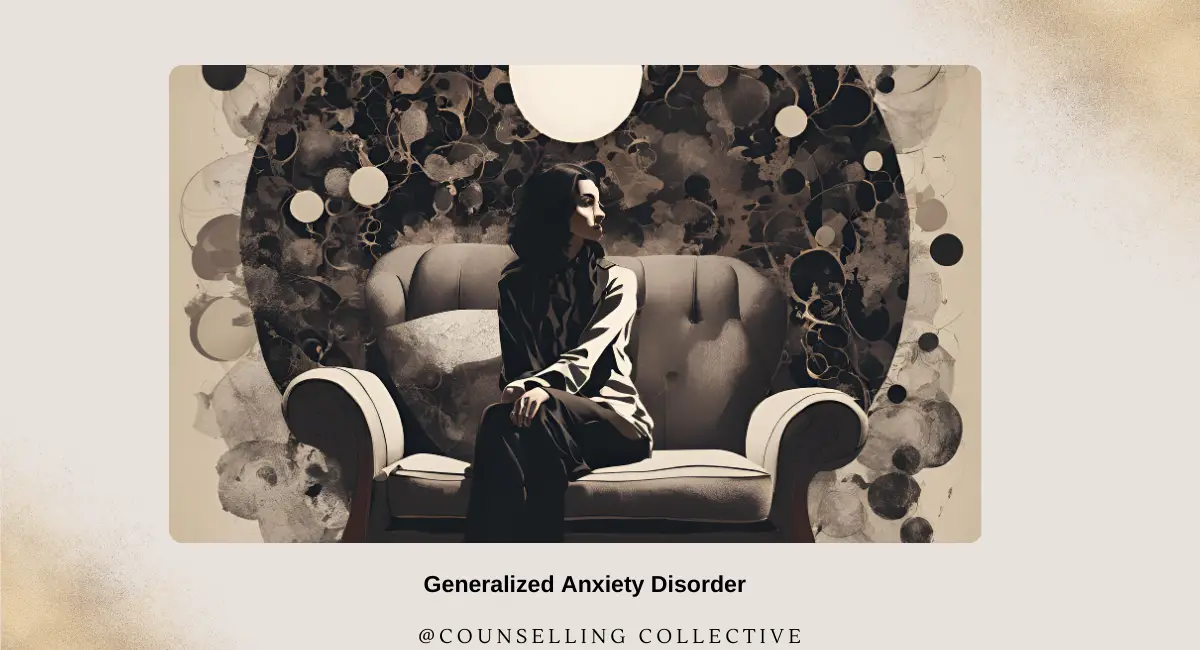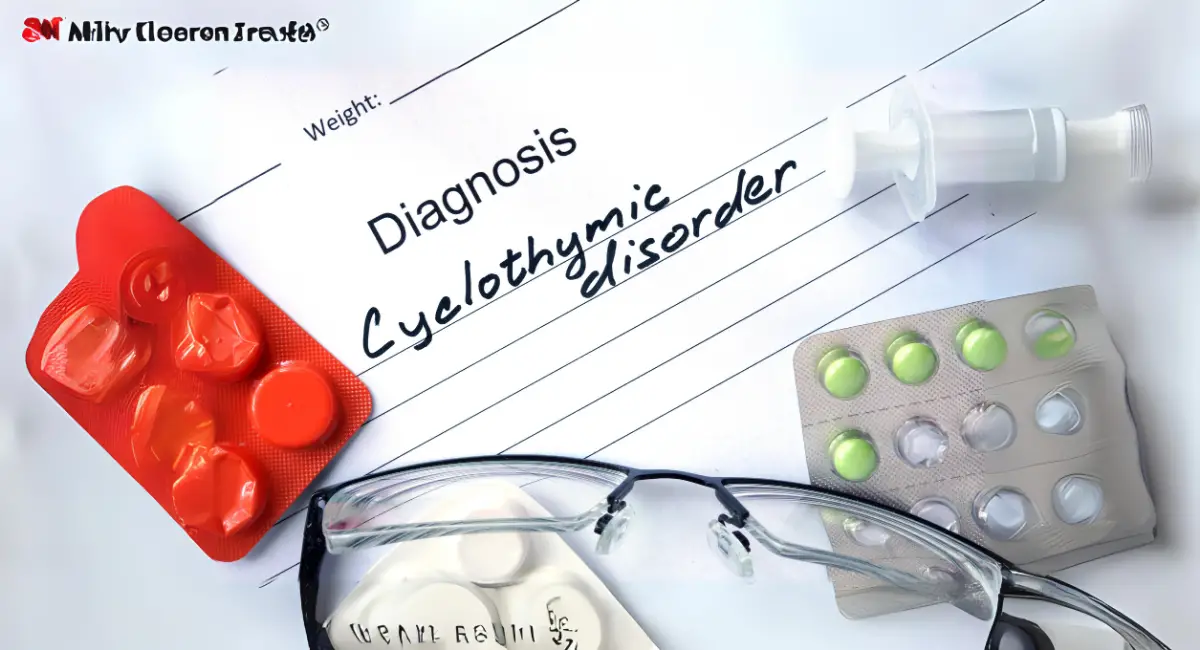
Premenstrual Dysphoric Disorder (PMDD): Symptoms, Causes, and Therapy Options
Contents
- 1 Introduction
- 2 Common Symptoms of Premenstrual Dysphoric Disorder (PMDD)
- 3 Causes and Risk Factors of Premenstrual Dysphoric Disorder (PMDD)
- 4 Therapy and Treatment Options for Premenstrual Dysphoric Disorder (PMDD)
- 5 Long-Term Management of Premenstrual Dysphoric Disorder (PMDD)
- 6 Conclusion
- 7 References
Introduction
Premenstrual Dysphoric Disorder (PMDD) is a severe form of premenstrual syndrome (PMS) characterized by intense emotional and physical symptoms that occur during the luteal phase of the menstrual cycle, typically in the days leading up to menstruation. While PMS can cause discomfort and mild mood changes, PMDD involves significant mood disturbances that disrupt daily functioning, often leading to depression, anxiety, irritability, and physical symptoms such as bloating and fatigue.
According to the Diagnostic and Statistical Manual of Mental Disorders, Fifth Edition (DSM-5), PMDD is a mood disorder that affects 3-8% of menstruating individuals. The symptoms are cyclical, appearing during the premenstrual phase and resolving shortly after menstruation begins. This article will explore the Symptoms, Causes, and Therapy Options for Premenstrual Dysphoric Disorder.
Common Symptoms of Premenstrual Dysphoric Disorder (PMDD)
PMDD involves both emotional and physical symptoms that are cyclical in nature. Below is a table outlining the common symptoms of PMDD, along with real-life examples of how they manifest:
| Symptom | Description/Example |
|---|---|
| Severe Mood Swings | Rapid changes in mood, often from feeling happy to feeling irritable or sad within a short period. For example, someone may feel fine one moment but suddenly become irritable or anxious without an obvious trigger. |
| Irritability or Anger | Persistent irritability or anger that affects relationships and daily functioning. For example, someone may become easily annoyed with colleagues or family members, leading to arguments or conflicts. |
| Depressed Mood or Hopelessness | Feelings of sadness, hopelessness, or worthlessness. For example, someone may feel overwhelmed by sadness and struggle to find joy in activities they normally enjoy. |
| Anxiety or Tension | Feelings of anxiety, nervousness, or being on edge. For example, someone may feel anxious about everyday tasks or social situations, even if they usually handle them well. |
| Fatigue or Lack of Energy | Persistent tiredness or exhaustion. For example, someone may feel too tired to complete daily tasks, such as working or socializing, despite getting enough sleep. |
| Physical Symptoms | Bloating, breast tenderness, headaches, joint pain, or changes in sleep and appetite. For example, someone may experience significant bloating and discomfort, making it difficult to focus at work. |
Causes and Risk Factors of Premenstrual Dysphoric Disorder (PMDD)
The exact cause of PMDD is not fully understood, but it is believed to be related to the body’s abnormal response to the hormonal fluctuations that occur during the menstrual cycle. Certain genetic, biological, and environmental factors may increase the likelihood of developing PMDD.
1. Hormonal Fluctuations
Hormonal changes during the menstrual cycle, particularly in estrogen and progesterone levels, are believed to trigger PMDD symptoms. It is not the hormone levels themselves but the body’s sensitivity to these hormonal fluctuations that is thought to cause PMDD.
- The luteal phase of the menstrual cycle, which occurs after ovulation and before menstruation, is characterized by a rise in progesterone and a fall in estrogen levels. These hormonal changes can influence neurotransmitter systems, particularly serotonin, which affects mood regulation.
- Research suggests that individuals with PMDD may have an exaggerated response to normal hormonal fluctuations, leading to mood instability and physical symptoms.
2. Neurotransmitter Imbalances
The brain’s neurotransmitter systems, particularly serotonin, play a key role in regulating mood and emotions. Individuals with PMDD may have abnormalities in serotonin function, which could explain the mood disturbances and emotional instability associated with the disorder.
- Serotonin, a neurotransmitter that regulates mood, is influenced by hormonal fluctuations during the menstrual cycle. Decreased serotonin levels during the luteal phase may contribute to mood swings, depression, and irritability in individuals with PMDD.
- Selective serotonin reuptake inhibitors (SSRIs), which increase serotonin levels in the brain, are often effective in treating PMDD, further supporting the link between serotonin and the disorder.
3. Genetic and Environmental Factors
Genetic predisposition may play a role in the development of PMDD. Individuals with a family history of mood disorders, including depression and anxiety, may be more susceptible to PMDD. Additionally, environmental stressors, such as chronic stress or trauma, can exacerbate PMDD symptoms.
- Studies suggest that mood disorders, including PMDD, are heritable. A family history of depression, anxiety, or bipolar disorder may increase the likelihood of developing PMDD.
- Environmental factors, such as high levels of stress, relationship issues, or a history of trauma, can worsen the severity of PMDD symptoms by further dysregulating emotional responses.
Therapy and Treatment Options for Premenstrual Dysphoric Disorder (PMDD)
Treating PMDD often involves a combination of lifestyle changes, medications, and therapy to manage both the emotional and physical symptoms. Below are key treatment options:
1. Cognitive Behavioral Therapy (CBT)
CBT is a widely used therapy for PMDD, focusing on helping individuals identify and challenge negative thought patterns and behaviors that contribute to emotional distress. CBT is particularly effective in managing the mood swings, irritability, and anxiety associated with PMDD.
Example: Emily, who experiences severe mood swings and irritability during the luteal phase of her cycle, works with her CBT therapist to recognize her negative thought patterns and develop healthier coping strategies. By identifying triggers for her emotional distress, she is better able to manage her symptoms and reduce the impact they have on her daily life.
2. Mindfulness-Based Cognitive Therapy (MBCT)
MBCT combines mindfulness practices with cognitive therapy to help individuals with PMDD manage their mood swings and emotional distress. By teaching mindfulness techniques, MBCT helps individuals become more aware of their thoughts and emotions without becoming overwhelmed by them.
Example: Sarah learns through MBCT how to observe her feelings of irritability and sadness without reacting impulsively. By practicing mindfulness during her premenstrual phase, she is better able to manage her emotional symptoms and maintain her daily routines.
3. Acceptance and Commitment Therapy (ACT)
ACT focuses on helping individuals accept their negative thoughts and emotions rather than trying to eliminate them. For individuals with PMDD, ACT can be particularly helpful in managing mood swings and emotional distress by teaching them to acknowledge their feelings without judgment and commit to positive actions.
Example: John uses ACT techniques to accept the feelings of irritability and frustration she experiences during her premenstrual phase. Instead of trying to suppress these emotions, she learns to recognize them as temporary and focuses on actions that align with her values, such as spending time with loved ones or engaging in self-care.
4. Nutritional Psychiatry
Nutritional psychiatry involves using diet and nutrition to support mental health. For individuals with PMDD, maintaining a balanced diet rich in nutrients that support neurotransmitter function, such as omega-3 fatty acids, magnesium, and B vitamins, can help alleviate mood-related symptoms.
Example: Sarah works with a nutritional psychiatrist to improve her diet by incorporating more foods rich in omega-3s, such as fish, nuts, and seeds, along with leafy greens and whole grains. Over time, she notices a reduction in the intensity of her PMDD symptoms, particularly her mood swings and fatigue.
Long-Term Management of Premenstrual Dysphoric Disorder (PMDD)
PMDD requires long-term management strategies to reduce the impact of symptoms on daily life. Below are key strategies for managing PMDD over the long term:
- Lifestyle Changes: Regular exercise, a balanced diet, and adequate sleep can help reduce the severity of PMDD symptoms. Avoiding caffeine, alcohol, and high-sugar foods can also prevent mood fluctuations.
- Therapy and Support: Ongoing participation in therapies such as CBT, MBCT, or ACT can help individuals develop effective coping strategies to manage emotional distress.
- Stress Management: Mindfulness practices, relaxation techniques, and stress reduction strategies can help individuals cope with emotional symptoms during the premenstrual phase.
- Support Networks: Connecting with supportive friends, family, or support groups can provide emotional support and reduce feelings of isolation for individuals coping with PMDD.
Conclusion
Premenstrual Dysphoric Disorder (PMDD) is a severe mood disorder that affects many menstruating individuals, leading to intense emotional and physical symptoms in the days leading up to menstruation. Although PMDD can significantly impair daily functioning, effective treatments such as Cognitive Behavioral Therapy, Mindfulness-Based Cognitive Therapy, Acceptance and Commitment Therapy, and Nutritional Psychiatry can help manage symptoms and improve quality of life. Long-term management strategies, including lifestyle changes and stress management, are essential for maintaining stability and reducing the impact of PMDD on daily life.
References
- American Psychiatric Association. (2013). Diagnostic and Statistical Manual of Mental Disorders (5th ed.). Washington, DC: American Psychiatric Publishing.
- Nolen-Hoeksema, S. (2014). Abnormal Psychology. McGraw-Hill Education.
- Pearlstein, T. B., & Steiner, M. (2008). Premenstrual Dysphoric Disorder: The Evolution of DSM Criteria and Options for Treatment. Medscape.
- Yonkers, K. A., & O’Brien, P. M. S. (2008). Premenstrual Dysphoric Disorder. The Lancet, 371(9619), 1200-1210.
- Craske, M. G., & Barlow, D. H. (2007). Mastery of Your Anxiety and Depression: Workbook (Treatments That Work). Oxford University Press.
Explore Other Mental Health Issues







